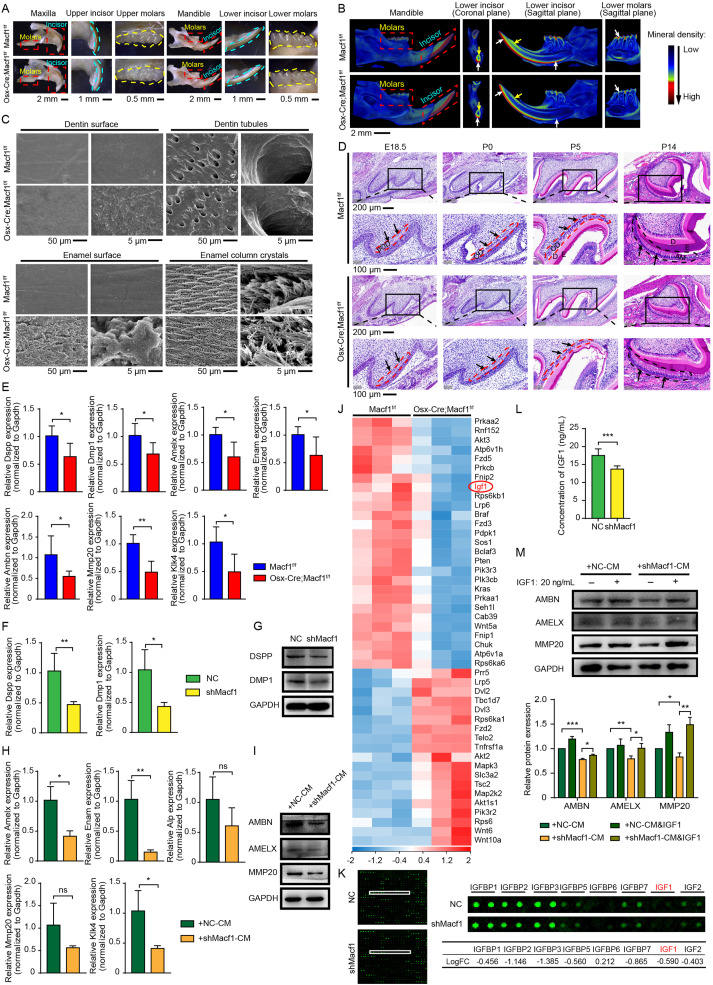
MACF1 deficiency suppresses tooth mineralization through IGF1 mediated crosstalk between odontoblasts and ameloblasts


Tooth mineralization is a ubiquitous and tightly regulated process involving complicated interactions between dental epithelium and mesenchyme. Key molecules in tooth mineralization remain poorly identified. Microtubule actin cross-linking factor 1 (MACF1) is a spectraplakin protein that plays pivotal roles in the brain, muscle, lung, and bone developmental process.1, 2, 3 To study the specific functions of MACF1 in bone formation, we established Macf1 conditional knockout mice using the Cre-LoxP system driven by Osxterix promoter (Osx-Cre;Macf1f/f).2 Not surprisingly, Osx-Cre;Macf1f/f mice displayed the phenotypes of delayed ossification and decreased bone mass. Moreover, the Osx-Cre;Macf1f/f mice unexpectedly showed a white and opaque appearance of incisors, contrary to the normal yellow-brown and transparent incisors. Since Osxterix is expressed in dental mesenchyme during tooth development, the abnormal tooth appearance might imply a new function of MACF1 in odontoblasts, or even ameloblasts. Therefore, the present study aimed to investigate the role of MACF1 during tooth development.
